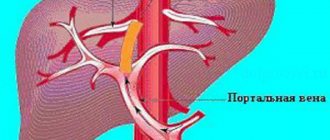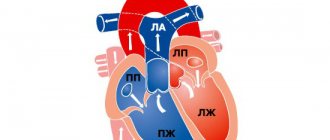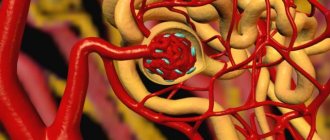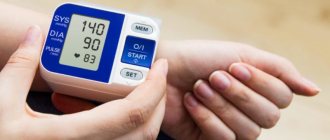Difference between hypertension and hypertension
Hypertension is a chronic disease characterized by prolonged high blood pressure and deterioration in general health. Hypertension is persistent high blood pressure. During an attack, blood pressure remains above 140 by 90 units (mmHg).
Key differences between hypertension and hypertension:
- Hypertension can occur even in a healthy person with increased physical or emotional stress,
- Hypertension is a functional disorder in the body,
- Hypertension can be diagnosed during an outpatient examination,
- Hypertension is diagnosed in a hospital setting.
What is the difference
Hypertension and arterial hypertension are not the same thing. The first condition is a disease that includes damage to the cardiovascular system and other organs susceptible to changes in blood pressure levels.
Hypertension, as opposed to hypertension, is only an increase in blood pressure to the hypertensive level.
The table below presents the features of arterial hypertension and hypertension and their differences.
| Hypertonic disease | Arterial hypertension | |
| What it is | Disease | Syndrome |
| Can it occur in a healthy person? | Never, since the disease is always associated with changes in internal organs due to periodic increases in blood pressure above normal | Periodic increases in blood pressure levels can occur in healthy people after physical and emotional stress, taking certain medications, or drinking caffeine-containing drinks. |
| What is this connected with? | With an increase in vascular tone and a decrease in their elasticity | With the reflex reaction of the human body to various stimuli |
| Is treatment necessary? | Yes, since the disease is constantly progressing and significantly increases the risk of stroke, myocardial infarction and other complications | Does not require therapy, as it goes away on its own after eliminating the provoking factor |
| At what age is it observed | More common in people over 40 years of age | Any age |
Symptoms
The symptoms of arterial hypertension and hypertension syndrome, at first glance, do not differ.
Knowing how hypertension and hypertension develop, it becomes clear that hypertension has a more complex clinical picture.
Manifestations of hypertension
Often increased blood pressure above 140/90 mmHg. Art. without therapy leads to persistent changes in blood vessels and target organs.
In the presence of hypertension, symptoms similar to those indicated above occur (however, they have certain characteristics).
Clinical manifestations of hypertension are less pronounced, which is associated with adaptation of the cardiovascular system (patients often do not notice an increase in systolic blood pressure above 160 mm Hg).
What else is the difference between hypertension and hypertension? With a prolonged increase in blood pressure, signs of target organ damage may appear.
Most often, in this case, symptoms of heart failure occur - shortness of breath, increased fatigue. Gradually, pain may arise during physical activity due to insufficient blood supply to the myocardium.
Impaired blood flow in the brain leads to memory impairment and decreased cognitive function. This condition, called discirculatory encephalopathy, is observed in all patients who have had hypertension for a long time.
Manifestations of hypertension
When blood pressure rises above normal levels, a person may complain of the following ailments:
- pain in the head - with hypertension it is girdling in nature, spreading to the forehead, temporal and occipital regions (the patient complains of a feeling as if the head is “squeezed by a hoop”);
- eye pressure;
- noise in ears;
- redness of the facial skin.
In some cases, swelling of the eyelids and face may be added to the symptoms listed above in the morning. If an increase in blood pressure is accompanied by impaired blood flow in the vessels of the head, “floaters” appear before the eyes.
Typically, such symptoms disappear after taking a horizontal position (stay in this position for several minutes).
Differences in causes
Hypertension is an independent disease. The only exception is the symptomatic type that accompanies diabetes mellitus, gout, atherosclerosis, pheochromocytoma, etc. The difference between hypertension is that it occurs with brain injuries, severe emotional stress, endocrine diseases, age-related changes in blood vessels, obesity, a sharp increase in the level of adrenaline in the blood, alcohol abuse and smoking.
Often, primary and secondary hypertensive conditions are often accompanied by chronic hypertension.
But there are other reasons. Symptoms may occur when:
- Vegetative-vascular dystonia,
- Atherosclerosis of blood vessels,
- Poisoning (especially with alcohol),
- Brain diseases
- Dysplasia,
- Pregnancy,
- Atherosclerosis of the renal artery,
- Bronchial asthma,
- Obstructive bronchitis,
- Hormonal imbalances,
- Increased blood cholesterol levels.
Features of hypertension
Hypertension and arterial hypertension are not the same thing. If the first condition is a full-fledged disease, then the second is only a syndrome characterized by an increase in blood pressure levels above normal.
Arterial hypertension can lead to the appearance of:
- disturbance of nervous regulation of the cardiovascular system;
- psycho-emotional stress;
- physical exercise;
- kidney disease (in this case, the production of hormones that have a vasoconstrictor effect and stimulate cardiac activity increases);
- brain diseases, head injuries;
- taking hormone-containing drugs (for example, oral contraceptives);
- drug poisoning;
- lung diseases, including instructive bronchitis and bronchial asthma.
Let's look at the difference between hypertension and arterial hypertension; What are the differences between the manifestations, methods of diagnosis and treatment of these conditions?
Differences in symptoms
Arterial hypertension and hypertension have partially similar symptoms:
- Headaches and dizziness,
- Fast fatiguability,
- Edema,
- shortness of breath,
- Numb fingers
- An unreasonable feeling of anxiety and fear.
This is where the slight similarities between the two states end. The main symptoms of hypertension:
- sweating,
- Memory impairment
- Pain in the heart area,
- Photopsias,
- Tachycardia,
- Insomnia,
- Pain in the eyes,
- Nosebleeds.
Hypertension manifests itself in elevated blood pressure levels. Otherwise, the syndrome has no distinctive symptoms, and this is why it is dangerous. Many people mistake high blood pressure for fatigue and do not seek diagnosis. This ends in most cases with a hypertensive crisis.
Hypertension is also distinguished by the fact that it can make itself felt with passing frequency over several years. Symptoms can increase, decrease, or disappear completely under the influence of various factors.
Causes of increased blood pressure
First of all, let's figure out what can provoke an increase in blood pressure. Knowing this, you can prevent the occurrence of a pathological condition by taking timely preventive measures. An increase in blood pressure can begin for many reasons, but the following are the most basic risk factors:
- failure of the endocrine system;
- elevated cholesterol levels;
- a sharp increase in blood sugar;
- sedentary lifestyle;
- bad habits;
- excessive consumption of salt and liquid;
- excess weight;
- taking certain medications;
- hormonal imbalance;
- problems with the functioning of the central nervous system.
Emotional experiences, stressful situations, as well as physical or mental stress also contribute to an increase in blood pressure. Heredity also plays a big role. In order to better understand the differences between hypertension and hypertension, let's understand the features of the development of these conditions.
Differences in diagnosis
Hypertensive heart disease is diagnosed after a series of tests, and this is another difference between hypertension and hypertension. Basic tests - blood and urine. Attention is paid to the titers of phosphate, protein and uric acid in the urine, and sugar, hemoglobin and cholesterol in the blood. Additionally, patients are prescribed an ECG and echocardiogram, ultrasound of internal organs. Based on the data obtained, it is possible to draw a conclusion about the degree and stage of hypertension, and the onset of disturbances in the functioning of target organs.
Hypertension is usually diagnosed incidentally in patients over 40 years of age as a symptom of an underlying disease. The syndrome is confirmed if elevated blood pressure is observed during two or three medical examinations.
Hypertension
Blood pressure is considered to be an average indicator that sums up the level in all vessels of the human body. Individual differences in the human body allow blood pressure to be considered normal in the range from 100 to 140 mm. mercury when the heart is compressed and 60-90 mm. when relaxing.
To determine the level of pathology, an average indicator is calculated, which takes into account the upper and lower values.
There is another term - working pressure, which is most characteristic of the patient.
Hypertension in blood vessels as a symptom is recorded when:
- kidney diseases;
- pathologies of the heart and vascular system;
- endocrine disorders (diseases of the adrenal glands and thyroid gland).
But such an increase is also an adaptive reaction of the body, occurring during high physical activity, hard work, or as a response to severe nervous stress.
There are initial (essential, primary) arterial hypertension and secondary.
What is the difference?
The primary increase in pressure is not accompanied by visible disturbances in the functioning of the body; increased values are recorded both during contraction of the heart and during its relaxation. Such a periodic increase, once established, will determine primary hypertension.
Secondary hypertension as a consequence of diseases of internal organs usually has a basis, a primary disorder: intraocular pressure provokes the development of glaucoma; a factor in the surge will be a hormonal imbalance.
The causes of hypertension depend on its type: disturbances in the functioning of the kidneys form the renovascular form; pressure disturbances in the veins cause venous; pathologies in the cranial cavity cause excessive intracranial pressure.
A feature of symptomatic (secondary) hypertension is normalization when the primary cause is removed - organ pathology.
Differences in Consequences
Damage to target organs, disruption of blood circulation, accompanied by dangerous complications of the brain, kidneys, heart, eyes and blood vessels - this is what distinguishes hypertension from hypertension. Patients have an increased risk of developing stroke, heart failure, heart attack, complete or partial loss of vision, and acute renal failure. For men, hypertension results in decreased impotence. Patients experience memory impairment, motor coordination, and fainting. The most severe consequences include coma and death. The second and third degrees of the disease are characterized by frequent and severe increases in blood pressure. In this case, the heart works in an increased mode, pushing blood through narrowed vessels. This often causes rupture of the vessel walls and internal hemorrhages.
Hypertension does not have such dire consequences, but can lead to the development of a hypertensive crisis. If help is not provided on time, there is a high chance of a heart attack.
Features of hypertension
Arterial hypertension is a pathological condition in which there is a regular increase in blood pressure levels. This disease occurs as a result of changes in the walls of blood vessels - increasing their tone, thickening, and decreasing elasticity.
Atherosclerosis also plays an important role in the manifestation of such disorders, which leads to a narrowing of the lumen of arteries and veins.
The risk of developing hypertension increases significantly in the presence of certain factors, among which the following stand out:
- genetic predisposition;
- weight gain;
- poor nutrition;
- pathologies of the nervous system, kidneys and other internal organs;
- menopause in women;
- lack of physical activity;
- frequent stress.
Hypertension alone is not a disease. In hypertension, this condition is always detected, but there are always signs of target organ damage.
Differences in treatment
Arterial hypertension differs from hypertension not only in causes and symptoms, diagnosis and consequences, but also in treatment methods. A mild form of hypertension does not require the use of medications. It can be quite simple to change your lifestyle, start eating right and doing exercise. Treatment of second- and third-degree hypertension involves prescribing medications and regular visits to a cardiologist. Medicines are aimed not only at lowering blood pressure, but also at eliminating possible consequences.
The most commonly prescribed drugs are diuretics, calcium channel blockers, sartans, calcium antagonists, ACE inhibitors and adrenaline beta blockers. Treatment of arterial hypertension can be carried out using a single drug or in a complex manner. This depends on the risk of complications and organ damage, the age and condition of the patient’s body, and other symptoms of concomitant diseases.
Hypertension does not require separate treatment, as it is just a symptom.
Depending on the underlying disease, the patient is observed by a neurologist, nephrologist, endocrinologist, therapist or gynecologist. In complex and rare cases that require emergency measures to lower blood pressure, special medications are prescribed. Medicines are not taken continuously or in courses, as with hypertension, but only until blood pressure normalizes. Once the underlying disease is eliminated, hypertension goes away on its own.
Treatment of hypertension
People at risk for essential hypertension include:
- those who have reached 50 years of age;
- having a hereditary tendency to the disease;
- who are diagnosed with high blood cholesterol levels.
High weight and physical inactivity are provocateurs of hypertension.
A serious factor is constant stress, a high level of anxiety in patients, and a sharp change in hormonal levels during menopause in women.
To regulate arterial hypertension, the doctor uses both drug therapy and correction of the patient’s lifestyle.
This includes correction of body weight, the rate of reduction of which is determined by the treating cardiologist, a change in diet and diet, which should include a large amount of fresh fruits and vegetables, lactic acid products, and a decrease in the rate of animal fats and salt.
The best option is to give up smoking and alcohol and introduce physical therapy and feasible physical activity into your daily routine.
Differences in prevention
To reduce the risk of developing cardiac hypertension, you need to lead a healthy lifestyle. It consists of maintaining a salt-free diet, limiting the consumption of animal fats, quitting smoking and drinking alcohol. All this is necessary not only to control blood pressure, but also to improve overall health and weight loss. This also includes regular exercise, walking in the fresh air, swimming or yoga. Physical inactivity is one of the main risk factors for developing the disease. Another necessary condition for prevention is the creation of a favorable emotional climate. This means avoiding stress, overwork, and night work. You need to find an activity that will bring positive emotions. Meditation practice, yoga, and hippotherapy will help you find peace of mind.
Hypertension is difficult to prevent purposefully. It can manifest itself with various diseases, which means prevention should be general and comprehensive.
It is necessary to adhere to a healthy lifestyle and minimize all emotional stress. What is the difference between the prevention of hypertension and hypertension - in taking additional natural vitamins and dietary supplements in the off-season, when vegetables and fruits become scarce. It is necessary to find time for regular visits to a therapist, especially with recurring symptoms, as well as for cardio exercises, breathing exercises and massage. You should try to exclude fatty and salty foods, fast food, processed foods and foods containing large amounts of preservatives, palm oil, and dyes from your diet. It is recommended to drink more herbal teas and infusions: sedatives, to lower blood pressure, to strengthen the heart, and general restoratives.
Preventive measures
Since the differences between hypertension and hypertension are mainly associated with the presence or absence of signs of damage to internal organs and blood vessels, the prevention of these conditions is carried out in the same way.
First of all, it consists of changing lifestyle, eliminating factors that contribute to increased blood pressure.
Recommended:
- stop smoking, excessive consumption of alcohol and coffee;
- eat right - avoid foods rich in simple carbohydrates; limit the consumption of animal fats, reduce salt intake;
- maintain a diet;
- maintain body mass index within normal limits;
- drink enough water throughout the day;
- maintain a sleep-wake schedule;
- Monitor blood pressure levels daily;
- exercise – there is no need for heavy training several times a week (it is enough to regularly walk in the fresh air for at least 30 minutes).
If you follow the recommendations listed above, you can not only normalize your blood pressure, but also significantly reduce the risk of developing diseases of the cardiovascular system.
Treatment and diagnosis
High blood pressure is a good enough reason to see a doctor. Due to the fact that it can be a symptom of various diseases.
Therefore, we invite you to familiarize yourself with diagnostic methods and treatment methods depending on the diagnosis - hypertension or hypertension.
Hypertension
Diagnostic methods include the following :
- Blood pressure control.
- Patient interview.
- Examination by a doctor.
Blood pressure monitoring involves recording indicators throughout the week to establish a trend. If the indicators do not correspond to the norm over a long period of time, this serves as the basis for a more detailed examination in order to identify the cause of hypertension.
Treatment is prescribed depending on the cause that caused the increased blood pressure. Since there can be many , the appropriate treatment is prescribed:
- Diuretics.
- Vasodilator drugs.
- Sedative medications when the causes of hypertension are stress or emotional stress.
Drug therapy is prescribed by a doctor in accordance with the cause of high blood pressure, identified diseases and the general condition of the patient.
Hypertension
Diagnostic methods:
- Blood pressure control.
- Questioning by a doctor.
- Examination of the patient.
- Electrocardiography.
- Echocardiography.
- Dopplerography.
- Ultrasound.
- Blood test (general and biochemical), urine.
Pay attention to the principles of drug treatment.
There are the following groups of drugs that are prescribed for treatment:
- Diuretics.
- Sartans.
- ACE inhibitors.
- Calcium antagonists.
- Vasodilators (vasodilating medications).
- Beta blockers.
- Aldosterone antagonists.
Complex therapy is also prescribed when other additional diseases are detected, for example, kidneys, heart, blood vessels, and so on.
Recommended viewing:
How to stabilize blood pressure?
There are differences between hypertension and hypertension, and treatment may also differ slightly. In order to get rid of grade 1 or 2 hypertension, it is not necessary to resort to drug therapy. It is often possible to stabilize blood pressure at the initial stage of development of hypertension with the help of a special diet and lifestyle changes. In many cases, you can cope with increased blood pressure by adhering to the following recommendations:
- get rid of excess weight;
- reduce salt and liquid intake;
- stop drinking alcohol and smoking;
- lead an active lifestyle, engage in moderate physical activity;
- avoid stressful situations and worries.
To eliminate the symptoms of the disease at an advanced stage, it is no longer possible to do without the use of medications that are strictly selected by the attending physician. Hypertension itself does not require treatment, and if it is caused by stress or physical strain, then you need to calm down and relax. After some time, the pressure will return to normal on its own. But if hypertension is a symptom of some pathological condition, then therapy is prescribed depending on the pathology and the degree of its neglect, after a thorough medical examination.
People living with high blood pressure do not always know exactly what their disease is called. Hypertension and hypertension, the differences between which many do not see, are often mistaken for the same disease. In fact, both conditions are characterized by increased blood pressure and have similar symptoms, but there are still differences between these disorders.
What is the difference between hypertension and hypertension: differences, approach to diagnosis and treatment
What is the difference between hypertension and hypertension? Are these states identical, or is there a fundamental difference between them? Let's try to figure it out.
Every second inhabitant of the planet suffers from high blood pressure; this pathology has become a disease of civilization due to the fast pace of life, disruption of circadian rhythms, constant stress and a decrease in the overall resistance of the body. Everyone knows about hypertension one way or another, but medical terminology is often used incorrectly by people, causing confusion. Usually two names are used to refer to the condition of high blood pressure (BP) - hypertension and hypertension, but they are not the same thing.
Essence of violations
Hypertension (HTN) is a separate pathology in which systematic disruptions in blood pressure with accompanying symptoms and disorders are noted. This is an independent disease that most often occurs with age or as a result of certain pathologies of internal organs. Arterial hypertension (AH) is the very fact of increased pressure in blood vessels. This is the main symptom of hypertension.
One of the most important differences between hypertension and hypertension is the peculiarity of their course. Hypertension is an independent disease, and hypertension is a symptom of a disorder occurring in the body, manifested in a systematic increase in blood pressure readings.
If we talk about the similarities of these two concepts, then only in cases of hypertensive crisis, which is caused by persistent hypertension and occurs as a result of hypertension. Let us consider in more detail the features of pathologies.
Symptoms
It is appropriate to know the symptoms of high blood pressure for timely recognition of diseases and prescribing appropriate treatment:
- Headache.
- Swelling of the face.
- Redness of the facial skin.
- Feeling of tinnitus.
- Flashing of flies before the eyes.
- Feeling of pressure on the eyes.
If elevated blood pressure is observed for a long time, this entails changes in the cardiovascular system (heart pain, heart rhythm disturbances, shortness of breath), damage to blood vessels, deterioration of vision, memory, and hearing.
Hypertension occurs against the background of hypertension (high blood pressure) of a chronic nature. Regarding the symptoms of hypertension, they are the same as the signs of hypertension.
It is important to note that the key symptom of hypertension is high blood pressure. Therefore, it is important to monitor your general condition of the body and consult a doctor in time for further examination.
Classification of arterial hypertension
Another difference between hypertension and hypertension is that hypertension is not classified as a separate classification and is considered in terms of a general persistent increase in hydrodynamic pressure.
There are two main classifications of hypertension by stage - one of them is based on clinical manifestations, and the other is based on blood pressure.
What stages are included in the clinical classification?
- The blood pressure is above normal for most of the day, but there is no damage to the target organs (also called shock organs). This stage is most favorable for treatment.
- The first signs of damage in target organs are observed: microscopic damage to blood vessels, hemorrhages in the parenchyma of shock organs, in particular the kidneys, liver, and brain.
- A dangerous condition in which the shock organs are seriously damaged, their failure develops, and the body cannot compensate for the increased blood pressure. This stage is often complicated by hypertensive crises - an acute increase in pressure exceeding 200 mm Hg. Art. Long-term hypertension leads to damage to the microvasculature, retinopathy, angiopathy, swelling of the optic disc and other pathologies.
An insufficiently active lifestyle leads to muscle weakness, this also applies to the heart muscle, which atrophies without sufficient stress, and the vascular wall weakens and becomes less capable of contraction.
Based on blood pressure levels, the following degrees of pathological condition are distinguished:
- Optimal blood pressure: SBP (systolic blood pressure) < 120 / DBP (diastolic blood pressure) < 80 mm Hg. Art.
- Normal blood pressure: SBP 120–129 / DBP 80–84 mmHg. Art.
- High normal blood pressure: SBP 130–139 / DBP 85–89 mmHg. Art.
- Isolated systolic hypertension: SBP greater than or equal to 140 / DBP less than 90.
Principles of treatment
Enter your pressure
130
on
90
Search in progress Not found
- There is a belief that if there is sufficient tolerance to high blood pressure, it is possible not to carry out treatment. This is incorrect and dangerous. Constantly high blood pressure levels contribute to various adverse consequences: heart and kidney failure, visual disturbances, stroke, coronary artery disease.
- When treating arterial hypertension, specialists try to reduce blood pressure to “working” levels. The specialist necessarily strives to lower blood pressure to normal levels. This approach is recommended by most leading experts.
- It should be noted that the decrease in blood pressure to normal levels occurs in stages. Even a one-time decrease in pressure by more than a quarter of the initial level is dangerous.
- Smoking is harmful to overall health. Nicotine causes blood vessels to constrict, which leads to increased blood pressure. Those who have been diagnosed with hypertension are prohibited from smoking. Drinking alcoholic beverages in moderation helps to reduce the condition of blood vessels and lower blood pressure.
- After proper diagnosis, a qualified specialist should be selected to prescribe proper therapy.
- There are a large number of medications.
Often, experts prescribe about 2-3 drugs with different effects in order to block several mechanisms of increasing blood pressure:
- diuretics are prescribed at the very beginning of therapy. These medications act to reduce sodium concentration and fluid content inside the body, resulting in a decrease in high blood pressure. But there is a side effect of such a drug - a decrease in potassium inside the body, which causes convulsive contractions in the lower extremities and weakness. Another side effect in people with diabetes is a sharp increase in sugar levels in the bloodstream.
- Beta blockers are prescribed to lower heart rate and reduce stress on the heart. After use, side effects are likely to occur as a general weakness.
- Calcium channel blockers reduce the entry of calcium into the cardiovascular system. Such drugs reduce the intensity of heart contractions and promote relaxation of the artery, and therefore blood pressure decreases.
- alpha blockers, vasodilators, central alpha agonists - are prescribed when the above drugs do not help.
- nitroglycerin, nitroprusside, nifedipine are prescribed intravenously in order to sharply reduce blood pressure (during a hypertensive crisis). They act quickly, so they require specialist supervision.
In difficult situations, surgical intervention is necessary. This is necessary for neoplasms, during narrowing of the artery that leads to the kidney.
Comparative characteristics
These two states differ in the following features:
- Hypertension is a separate disease, and hypertension is a symptom that comes and goes. However, statistical data show that for the most part this symptom is constantly present in hypertensive patients.
- Hypertension develops primarily due to increased vascular tone, and hypertension has no specific cause. This is their main difference. The causes of hypertension are varied.
- Hypertension is a rather serious pathology that cannot be ignored. Such negligence can cause a lot of complications and even the death of the patient. Hypertension can occur not only in sick people and is not a disease. A person who never complains about his health may encounter it after exhausting training or severe emotional fatigue.
The main differences are presented below (Table 1).
Table 1 - Distinctive features of the two states
People living with high blood pressure do not always know exactly what their disease is called. Hypertension and hypertension, the differences between which many do not see, are often mistaken for the same disease. In fact, both conditions are characterized by increased blood pressure and have similar symptoms, but there are still differences between these disorders.
How is hypertension diagnosed and treated?
To identify health problems, first of all, blood pressure levels are measured; in addition, the doctor prescribes an ultrasound of the kidneys, an electrocardiogram, and an echocardiogram. More detailed information can be obtained using a general and biochemical blood test, urine examination and the patient’s hormonal background.
Treatment consists of using both medicinal and non-medicinal methods of therapy, which the doctor selects on an individual basis. This helps prevent the development of the disease, protects internal organs from damage, eliminates the accumulation of cholesterol in the blood, and also prevents the occurrence of kidney and heart failure, heart attack and stroke.
Non-drug methods include maintaining a healthy lifestyle. For obese people, a certain diet is prescribed, aimed at reducing body weight and cleansing the body of accumulated toxins. Animal fats are excluded from the diet; it is recommended to eat dairy products, vegetables and fruits more often.
In addition to correcting nutrition, it is important to reduce the consumption of alcoholic beverages, salty foods and stop smoking as much as possible. Additionally, it is necessary to moderately load the body, trying to avoid excessive physical activity.
What you need to know about hypertension?
As described above, hypertension is a symptom of hypertension. This is a short-term condition characterized by a sharp rise in blood pressure that occurs against the background of hypertension.
Hypertension can only be detected when pressure is measured using a tonometer. When the tonometer readings are above 140 mmHg, the presence of arterial hypertension is indicated.
But if the pressure was checked systematically for at least 6 months and during this time there were constant increases in blood pressure values, then they already speak of hypertension. It is precisely characterized by constant deviations in indicators.
It is worth remembering that hypertension can also often signal other pathological processes in the body, such as:
- kidney diseases;
- thyroid problems;
- all kinds of heart diseases;
- improper cerebral circulation.
The presence of hypertension can be observed in the fair sex, taking hormones and in pregnant women. In this case, such a failure does not indicate cardiac problems. Most likely, there are other diseases in the body and it is necessary to conduct an examination to identify the cause. Similar manifestations can occur if the thyroid gland produces an excess amount of hormones.
Signs of arterial hypertension:
- severe headaches in the occipital, frontal and temporal regions;
- redness of the skin;
- eye pressure;
- prolonged ringing and noise in the ears;
- swelling of the face after sleep;
- constant ripples before my eyes.
If high blood pressure does not decrease for a long time, then a disturbance in the functioning of the heart occurs. Shortness of breath, attacks of heart pain, and tachycardia may appear.
Drug treatment
The goal of therapy is to reduce the risk of developing cardiovascular complications. To achieve this, it is necessary to treat with antihypertensive drugs continuously (not in courses) in accordance with the doctor’s recommendations. Regarding medications, it is worth noting that there are different remedies. They are divided into the following groups:
- diuretics (“Hydrochlorothiazide”, “Furosemide”);
- β-blockers (“Propranolol”, “Betaxolol”);
- calcium antagonists (Verapamil, Amlodipine);
- angiotensin-converting enzyme inhibitors, ACE (Captopril, Quinapril);
- angiotensin II receptor blockers (Losartan, Irbesartan), etc.
A doctor can prescribe a specific drug after taking into account existing contraindications, the presence of concomitant diseases, the condition of the liver, kidneys and other internal organs. Monotherapy helps 1/3 of sick people. Other patients require multiple medications. This type of therapy is called combination therapy.
Practical differences in medical terms
Many people consider hypertension and hypertension to be synonymous. But these are excellent conditions. The first is the name for a one-time increase in pressure. The second term describes a constant or regular increase in blood pressure in a person. That is, if the first is assessed more as a symptom, then the second is considered a full-fledged disease.
In both conditions, the key sign is an increase in blood pressure over 140/90. This is the average statistical indicator of the increased norm. In both cases, stress, poor lifestyle, medication, and a significant amount of salt in food can play a big role in raising blood pressure. But in the case of hypertension, there are also factors such as vascular and cardiac pathologies, kidney abnormalities, and so on.
Main differences
Main complications with constant high blood pressure
How is hypertension different from arterial hypertension?
- There is no key cause of hypertension, as it can occur in various pathologies. The cause of hypertension is increased tone.
- Hypertension is a disease, and hypertension is a characteristic symptom of this disease, which may or may not be observed (in 95% of cases the symptom is observed, and in 5% it is absent).
- Hypertension requires appropriate treatment and observation, as this condition is fraught with serious complications. Regarding hypertension, it can occur against the background of pathologies and when a person is absolutely healthy. Therefore, it is worth talking about treatment only when the root cause of hypertension is identified and treated.
Differences between hypertension and hypertension in the table
| Hypertension | Hypertension |
| Term for illness | A term that denotes a human condition |
| Disease | A symptom of a disease or condition under certain conditions (physical stress, stress) |
| Not only blood pressure levels are increased, but also tone | Elevated blood pressure readings |
| Occurs in an unhealthy body | Can occur in a healthy body and against the background of other diseases and conditions |
| The appearance is due to hypertonicity of blood vessels | The appearance may be due to various reasons |
| Appropriate treatment required | It cannot be treated because it is not a pathology. Therapy is required by the cause that caused hypertension. |
Diagnosis of these diseases
To find out the most accurate blood pressure, you need to use a mercury sphygmomanometer with a stethoscope. But due to its large size, danger to the environment and difficulties with transportation, it is practically not used, replacing it with a more convenient electronic or mechanical tonometer. There are also devices that help measure blood in an outpatient clinic, which record the dynamics of pressure over the day.
Rules for identifying hypertension in an outpatient setting:
- some time before the start of the procedure, the patient should sit on a chair and spend some time in peace;
- It is also prohibited to smoke and drink coffee before measuring blood pressure;
- a few minutes after the first pressure measurement procedure, it is necessary to take a second one and display the average value;
- After taking the medicine, time must pass for it to take effect. Therefore, the next measurement should be no earlier than 15 minutes later.
By following these rules, a person will achieve more effective treatment for hypertension.
Measuring pressure at home
If you have already had problems with increased blood pressure, you need to have a device at home to measure it and be able to do it yourself.
It is quite easy to measure blood pressure at home. To do this, you will need a tonometer with a phonendoscope and a patient who will need to measure the pressure. The procedure takes place sitting, the hand should be relaxed. The cuff of the device will need to be fixed on the forearm of the right hand. The head of the phanendoscope must be pressed against the socket on the back of the elbow and begin pumping air. If the instrument needle is already at 200, smoothly unscrew the ring on the bulb so that it creeps down. After a while, you can hear the sound of pulsation. He will soon disappear. The data at the moment the pulse appears is the upper (systological), and at the moment of its disappearance – the lower (distological) indicator.
How is the diagnosis made?
In each patient's individual case of hypertension, the cardiologist must determine:
- speed and frequency of pressure increase;
- negative changes in internal organs (particular attention is paid to the kidneys, heart and brain);
- find the cause of the increase in blood pressure.
For these procedures, the patient is placed in a hospital and the state of his circulatory system is recorded for at least 3 weeks. During this time, a number of laboratory tests are carried out:
- determination of glucose, creatine and nitrogen levels in the blood;
- analysis of phosphate and uric acid levels;
- heart cardiogram;
- determination of glucose and protein levels in urine;
- chest x-ray;
- determination of cholesterol and calcium levels in the body;
- triglyceride analysis.
Depending on the results, some studies may be repeated several times, and other methods may also be used to help identify the cause of chronic hypertension. After this, the most optimal individual treatment will be prescribed.
Treatment of hypertension
If the first stage of the disease is identified, which manifests itself in a mild form, then non-drug methods are used. The patient is prescribed sedatives. He needs to quit smoking and change his diet.
The following improvements are possible:
- When quitting smoking, a person increases the lifespan of blood vessels and organs. Thanks to this, well-being is restored and blood pressure is reduced. You need to give up bad habits gradually, using an effective technique.
- If you reduce salt intake in your diet, a person will normalize fluid levels, so the kidneys, heart, and blood vessels can work without stress. This restores pressure.
- Walking, swimming, and therapeutic exercises will help improve your condition. The main thing is that physical activity is constant and light, so that it does not negatively affect your health.
If such measures do not produce results, medications are used. These may be diuretics, ACE inhibitors, calcium antagonists, sartans, beta blockers. A combination of products will help improve the effect.
Thus, we found out that hypertension differs from hypertension in that the former is not considered to be an independent disease, but it is manifested by increased blood pressure. If hypertension is detected, the primary disease is treated first. With hypertension, you can recover thanks to an improvement in your emotional state and physical activity.











